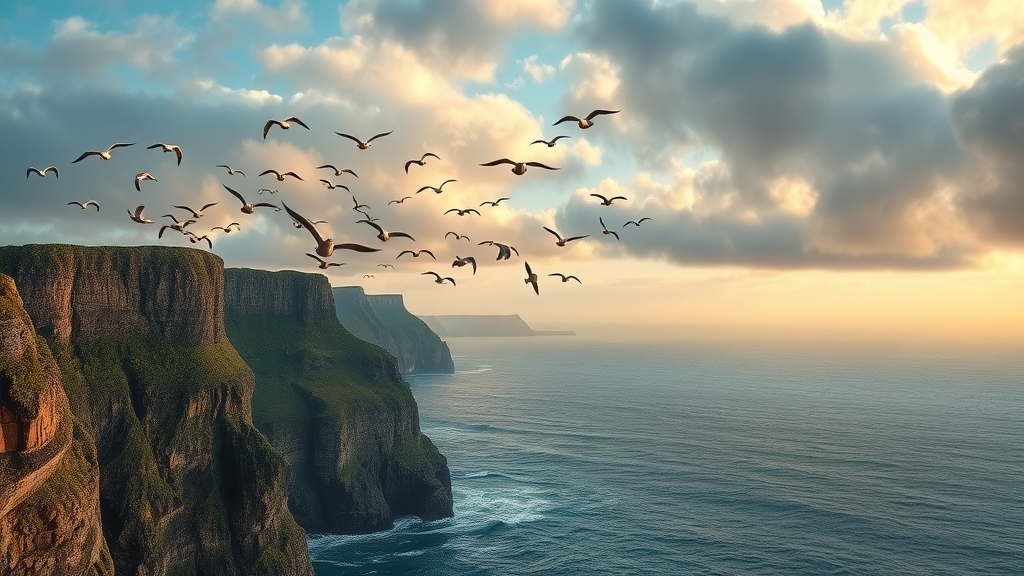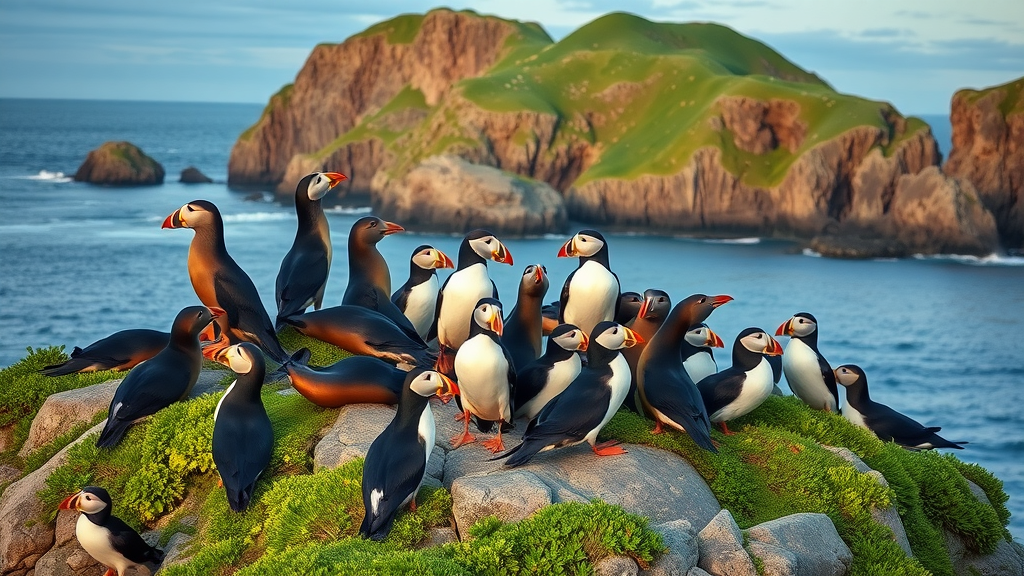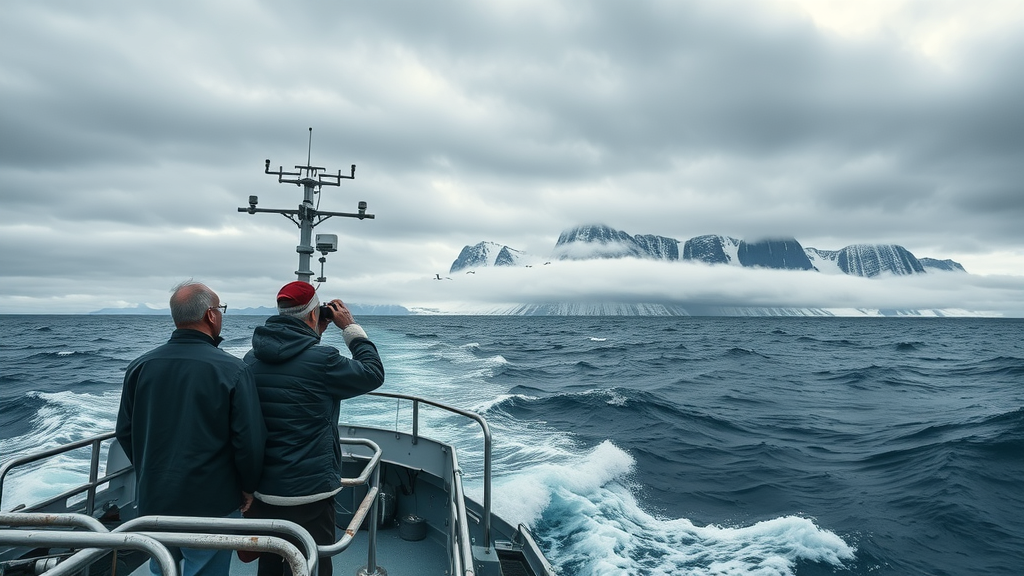Where Untamed Wilderness and Unseen Stories Shape the Alaska Maritime National Wildlife Refuge
Imagine a place where jagged volcanic islands pierce stormy seas, millions of seabirds fill the skies, and wild coastlines stretch so far they vanish beyond the horizon. The Alaska Maritime National Wildlife Refuge is just that place—a remote and rugged sanctuary whose scale and ecological importance are difficult to believe until seen with your own eyes. Yet, as climate change, invasive species, and human impacts test the world’s last wild places, understanding the complexity and fragility of such refuges is more urgent than ever.
With over 2,400 islands and headlands spanning the length of Alaska, the refuge shelters forty million seabirds across more than thirty species, along with a rich array of marine mammals and rare plants. Its landscapes are as diverse as its inhabitants: from barren, windswept atolls to lush, forested enclaves that have supported indigenous communities for millennia. This article pulls back the curtain on Alaska Maritime National Wildlife Refuge, unraveling the unique habitats, scientific mysteries, and conservation challenges that make this protected expanse a vital part of our natural heritage—and an emblem of hope for resilient ecosystems worldwide.
Beyond the Map: Why Alaska Maritime National Wildlife Refuge Is a Global Ecological Powerhouse

The Alaska Maritime National Wildlife Refuge is not only vast in area but also in significance. Stretching from the Aleutian chain to the Inside Passage and up to the Chukchi Sea, it provides essential habitat for some of the world’s largest congregations of seabirds and serves as a nursery for countless marine mammals. The refuge has been set aside and carefully managed for over a century, working to conserve and restore essential habitats that support both wildlife and cultural traditions of Alaska’s Native peoples. Its status as a national wildlife refuge means that every landscape is managed for the benefit of both present and future generations, aiming for a delicate balance between preservation, research, and community engagement.
When most people think of majestic nature preserves, they envision easily accessible forests or national parks. In contrast, much of this refuge is designated wilderness—isolated, uninhabited, and only accessible by specialized vessels or planes. Many of its islands are the ancestral homelands of Unangax̂/Aleut, Alutiiq/Sugpiak, and other Alaska Native groups, who have relied on these lands for resources and cultural continuity for thousands of years. The rich tapestry of life—from unique bird species that nest nowhere else on earth to rare plants untouched since the Ice Age—makes understanding and protecting the refuge everyone’s concern. Failing to grasp the interconnectedness of its ecosystems puts all these natural treasures at risk—a lesson painfully underscored by recent die-offs and the continuous threat of invasive species, such as nonnative rats disrupting delicate island habitats.

Why Alaska’s Coastal Refuges Matter: Real-World Benefits of Protecting Wild Islands and Wildlife
In the realm of wildlife conservation, the Alaska Maritime National Wildlife Refuge is both an ecological safeguard and a living laboratory. Its secluded coastlines and countless islands serve as essential havens for breeding seabirds and resting sites for migratory species that might otherwise struggle to survive. The abundance of marine foods in surrounding waters provides sustenance for quirky denizens like the least auklet and dramatic black-and-white common murre—the so-called “penguins of the north”—who gather in staggering numbers on steep cliffs. Native mammals and unique flora add another dimension, with some species found only on these isolated islands, preserved from change since before recorded history.
Conservation efforts here are not just about saving rare animals—they are about maintaining ecosystem resilience and keeping nature’s checks and balances intact. Efforts like rat eradication on select Aleutian Islands aim to restore natural order and prevent cascading effects that can devastate both bird populations and the plants that rely on natural seed dispersal. The refuge’s focus on scientific monitoring and data collection allows rapid responses to environmental crises, such as the severe murre die-off triggered by unexpected marine heatwaves in recent years. Thanks to continuous research, conservationists, researchers, and the public can make informed decisions, ensuring that the refuge remains a place where people, wildlife, and culture can thrive together.

From Ancient Homelands to Modern Conservation: The Refuge’s Deep Cultural and Natural Legacy
The land bounded by the refuge tells stories that precede modern borders. For centuries, Alaska’s indigenous peoples—Unangax̂/Aleut, Alutiiq/Sugpiak, Yup’ik/Cup’ik, Iñupiat, Dena'ina, Tlingit, Haida, and Eyak—have navigated these islands and oceans, drawing on intricate knowledge, sophisticated tools, and an abiding respect for the wilderness that shaped their survival. Many sites within the refuge remain vitally connected to the traditions and ongoing livelihoods of these communities, underscoring the importance of cultural conservation alongside biological protection.
Alongside tradition, modern science has become a pillar of stewardship here. The refuge’s long-term monitoring program—utilizing advanced research vessels like the Tiĝlax̂—tracks changes in everything from bird populations to water chemistry, aiming to identify environmental threats before they become disasters. By blending generational knowledge and technology, the Alaska Maritime National Wildlife Refuge stands not just as an isolated wildland, but as an evolving tapestry where people, nature, and science are deeply intertwined in the struggle to maintain abundance and resilience.
How Science Powers Adaptation: Learning from Seabird Die-Offs and Environmental Change
Not all conservation challenges are visible. The sudden loss of millions of common murres between 2014 and 2016 was a wake-up call that reverberated far beyond Alaska. Triggered by a marine heatwave, the event led to near-silent colonies where seabirds once thrived, reminding conservationists that even the most robust populations can be vulnerable to environmental volatility. This die-off didn’t just affect one species; it signaled underlying changes in the food web and warned of the delicate equilibrium that makes the refuge so ecologically important.

Scientific research at the refuge follows these population dynamics closely. The data collected help define what’s “normal” and quickly spotlight shifts that require urgent responses—whether from global warming, oil spills, or introduced predators. By taking action based on real-time observation and analysis, managers can test hypotheses and shape interventions that make a tangible difference, such as the current push to eradicate invasive rats from select islands, returning them to their pre-disturbance ecological states. This commitment to informed management is what ensures the sanctuary’s treasures can outlast the crises of today and uncertainties of tomorrow.
The Unique Rewards of Experiencing Alaska Maritime National Wildlife Refuge Up Close
For visitors and observers, the Alaska Maritime National Wildlife Refuge offers rare connections to wildness and wonder. During the summer, guided ranger programs and family events immerse people in everything from viewing seabirds nesting in impossible places to learning about Native crafts and ecological stewardship. Many are struck by the fierce beauty of the elements: a landscape at the mercy of ocean storms, where the play of sunlight can transform the Aleutians into something almost otherworldly.
Every moment spent here is also a lesson in fragility and resilience. The isolation that has protected these habitats for centuries is now a double-edged sword—preserving their uniqueness, but making them more vulnerable to subtle shifts in climate, invasive species, and even occasional human intrusion. Through storytelling, education, and direct experience, those who visit or study the refuge become part of its ongoing saga, taking home not just memories, but a deeper sense of responsibility for protecting one of Earth’s most remarkable wildernesses.
A Commitment Grounded in Science, Heritage, and Hope
The management and mission of the Alaska Maritime National Wildlife Refuge rest on a foundation of careful observation, community engagement, and a vision for resilient environmental health. Conservation here is not a static goal—it is a living process, drawing from the deep well of indigenous wisdom and propelled by leading-edge research. The refuge’s philosophy centers on conserving, protecting, and restoring its rich diversity through excellence in education and outreach, keeping wildlife abundance and cultural vibrancy inextricably linked.
Each partnership—with scientists, tribal groups, and volunteers—deepens the reach and relevance of the refuge’s protective mission. By focusing on continuous monitoring and adaptive management, the team seeks not only to react to threats, but to build the long-term capacity for recovery and flourishing across generations. In turn, Alaska Maritime National Wildlife Refuge has become a model for collaborative conservation, showing how scientific rigor can harmonize with ancient stewardship to safeguard both natural wonders and human heritage.
Whether developing projects to counteract invasive species or organizing educational programs throughout the year, the refuge’s approach highlights a belief in active, inclusive guardianship—a necessity for keeping Alaska’s coastal wildlands alive for those yet to come.
Firsthand Wonders: Awe and Inspiration Among the Islands
Personal experiences at the Alaska Maritime National Wildlife Refuge often echo the powerful emotions evoked by the landscape itself—feelings of awe, peace, and connection with something far bigger than daily life. Sometimes, all it takes is the perfect light breaking through the clouds, or a distant call of seabirds, to turn a visit into an unforgettable chapter of one’s story. As one recent visitor described:
When the sun breaks through the clouds, there is no place more amazing than the Aleutians.
—Scott Langley
Observations like these reflect more than scenery—they are reminders of the unique sense of place that can only be found in truly untouched natural spaces. Those fortunate enough to experience the Alaska Maritime National Wildlife Refuge firsthand find themselves drawn into its cycles of life, challenge, and renewal, encouraged to support the conservation that makes such wild beauty possible for the future.
Alaska Maritime National Wildlife Refuge: A Living Laboratory Shaping the Future of Conservation
The Alaska Maritime National Wildlife Refuge stands as one of North America’s—and the world’s—most vital landscapes, brimming with life, history, and untold scientific insights. Its protection ensures that millions of seabirds, rare mammals, and ancestral cultures continue to thrive amid the pressures of a changing planet. With decades of dedicated research, proactive management of threats like invasive rats, and relentless commitment to engaging the public, the refuge sets a standard for science-based, community-driven conservation.
As challenges continue to evolve, the expertise and wisdom cultivated by the Alaska Maritime National Wildlife Refuge light the way for safeguarding our planet’s remaining wild frontiers. Whether drawn by a love for wilderness, the allure of scientific discovery, or a desire to honor Alaska’s indigenous heritage, there is no denying the enduring value and far-reaching impact of this extraordinary sanctuary.
Contact the Experts at Alaska Maritime National Wildlife Refuge
If you’d like to learn more about how the Alaska Maritime National Wildlife Refuge contributes to conservation, science, and cultural heritage, contact the team at Alaska Maritime National Wildlife Refuge.
📍 Address: Alaska, USA
📞 Phone: +1 907-235-6546
🌐 Website: http://alaskamaritime.fws.gov/
Alaska Maritime National Wildlife Refuge: Location and Hours
🕒 Hours of Operation:
📅 Monday: Open 24 hours
📅 Tuesday: Open 24 hours
📅 Wednesday: Open 24 hours
📅 Thursday: Open 24 hours
📅 Friday: Open 24 hours
📅 Saturday: Open 24 hours
📅 Sunday: Open 24 hours

 Add Row
Add Row  Add
Add 





Write A Comment